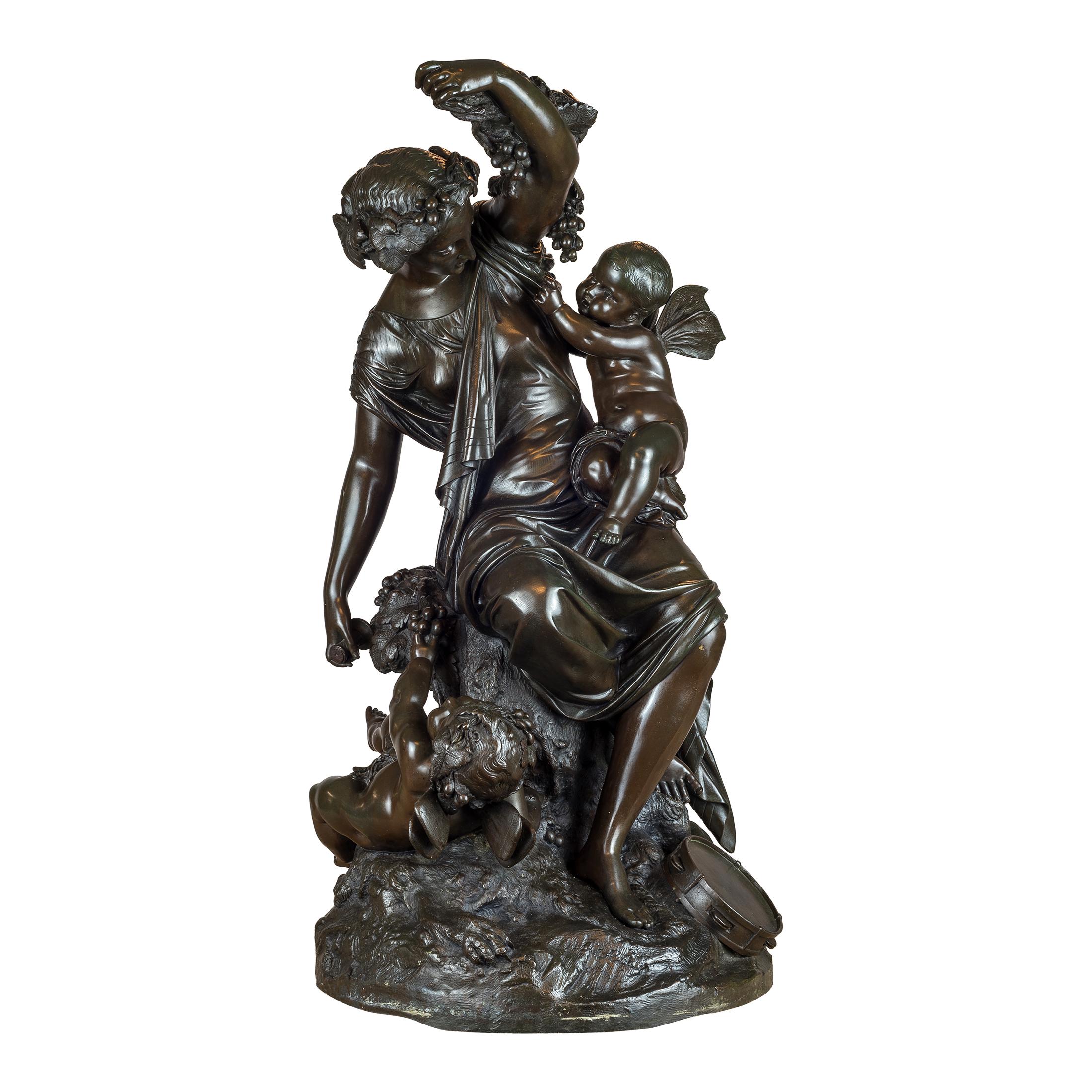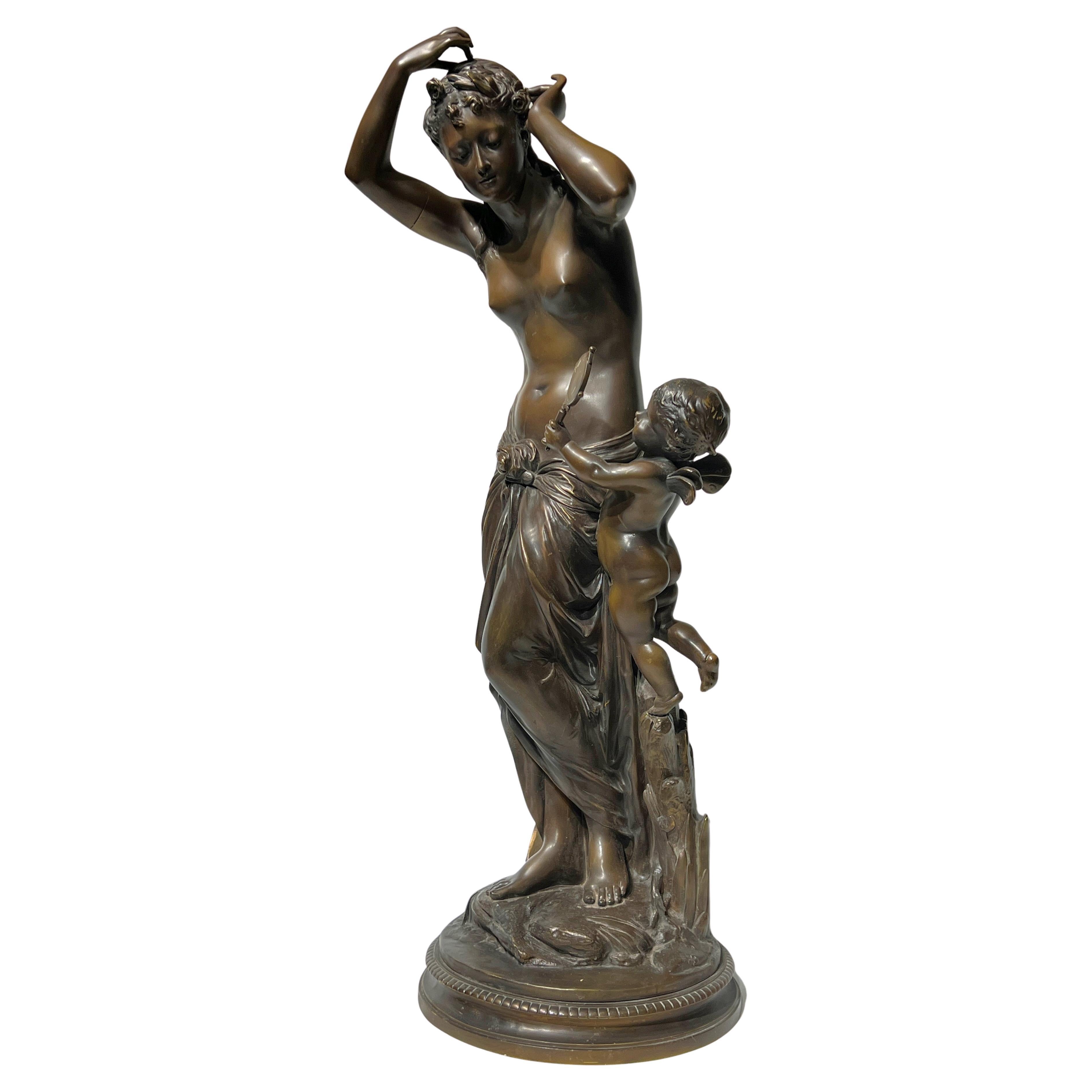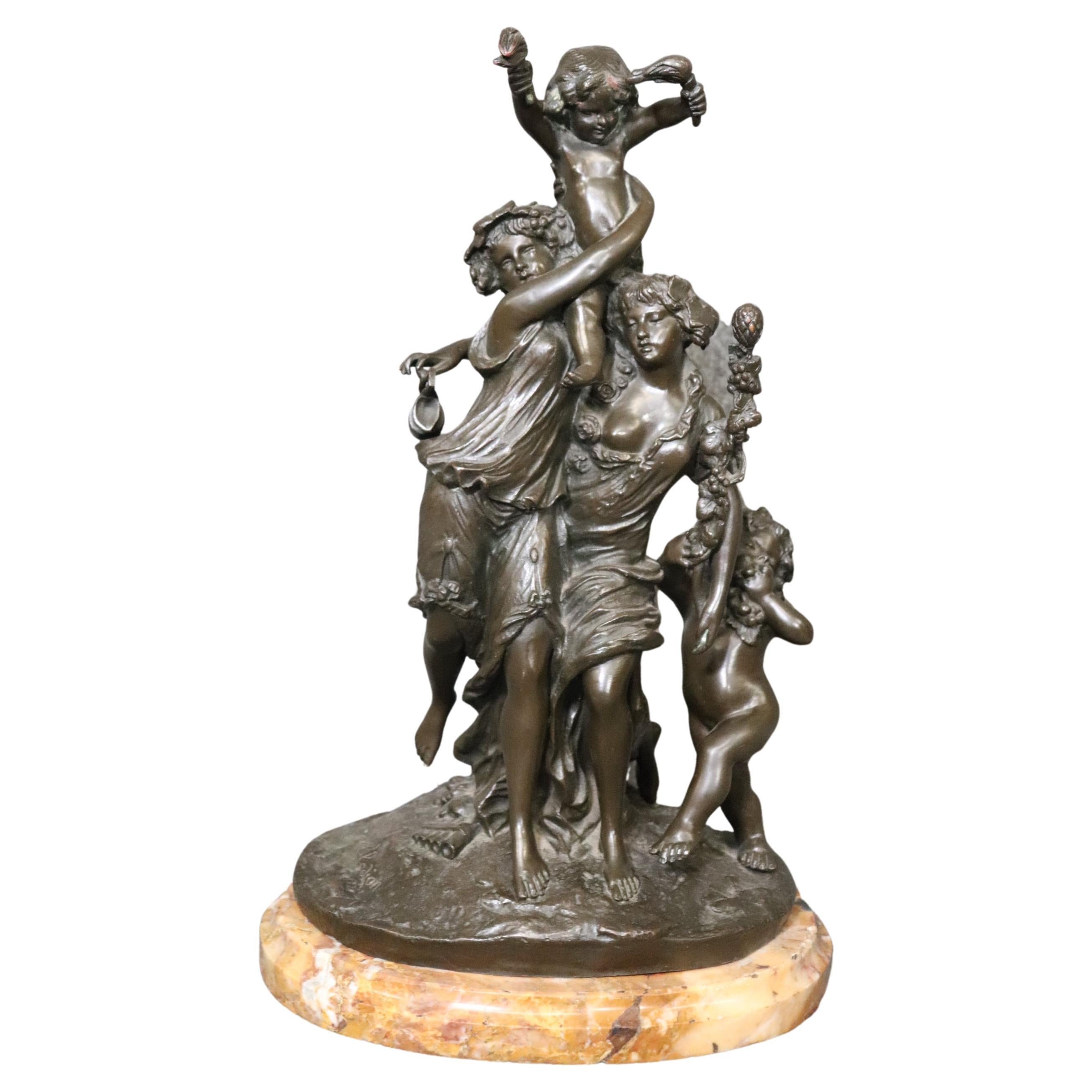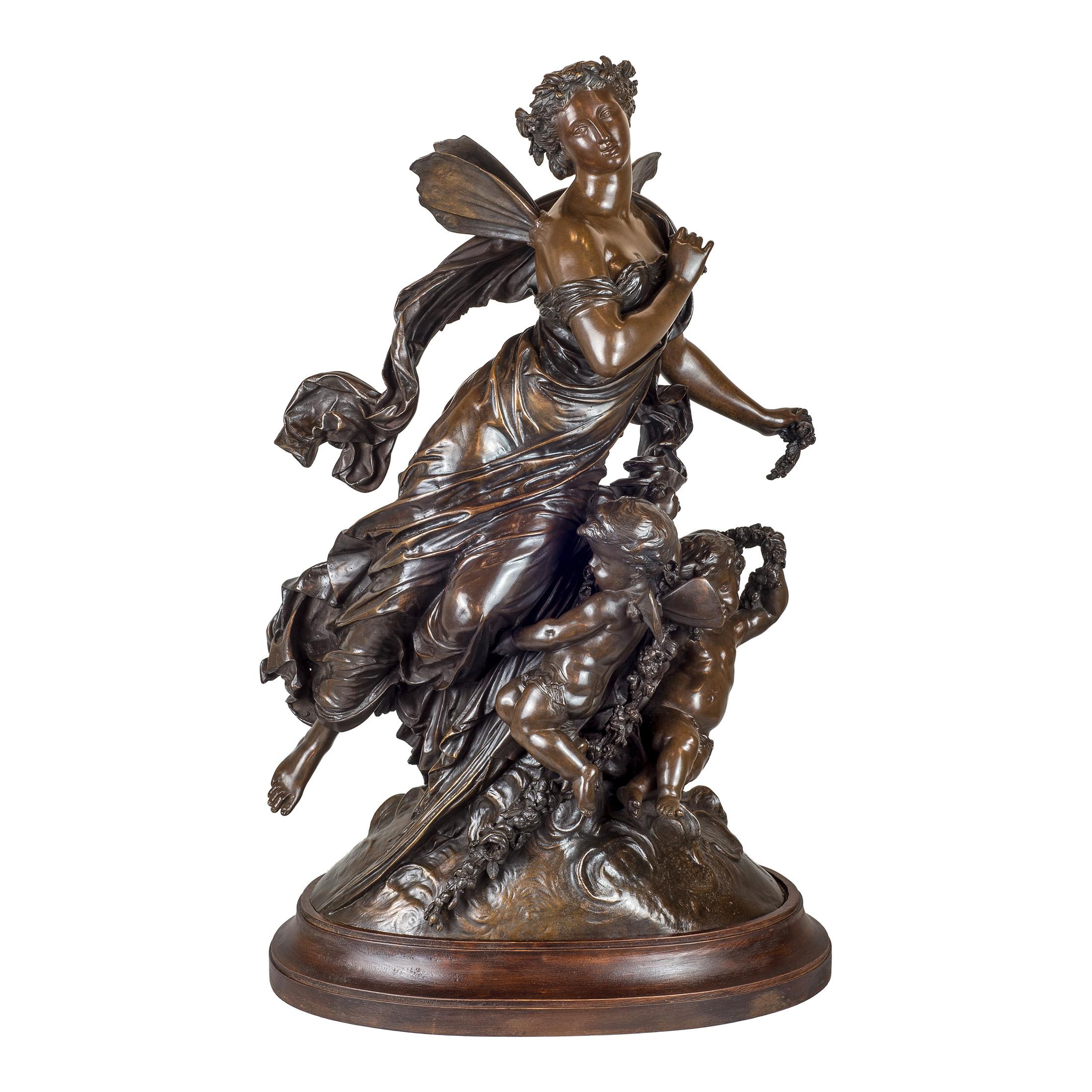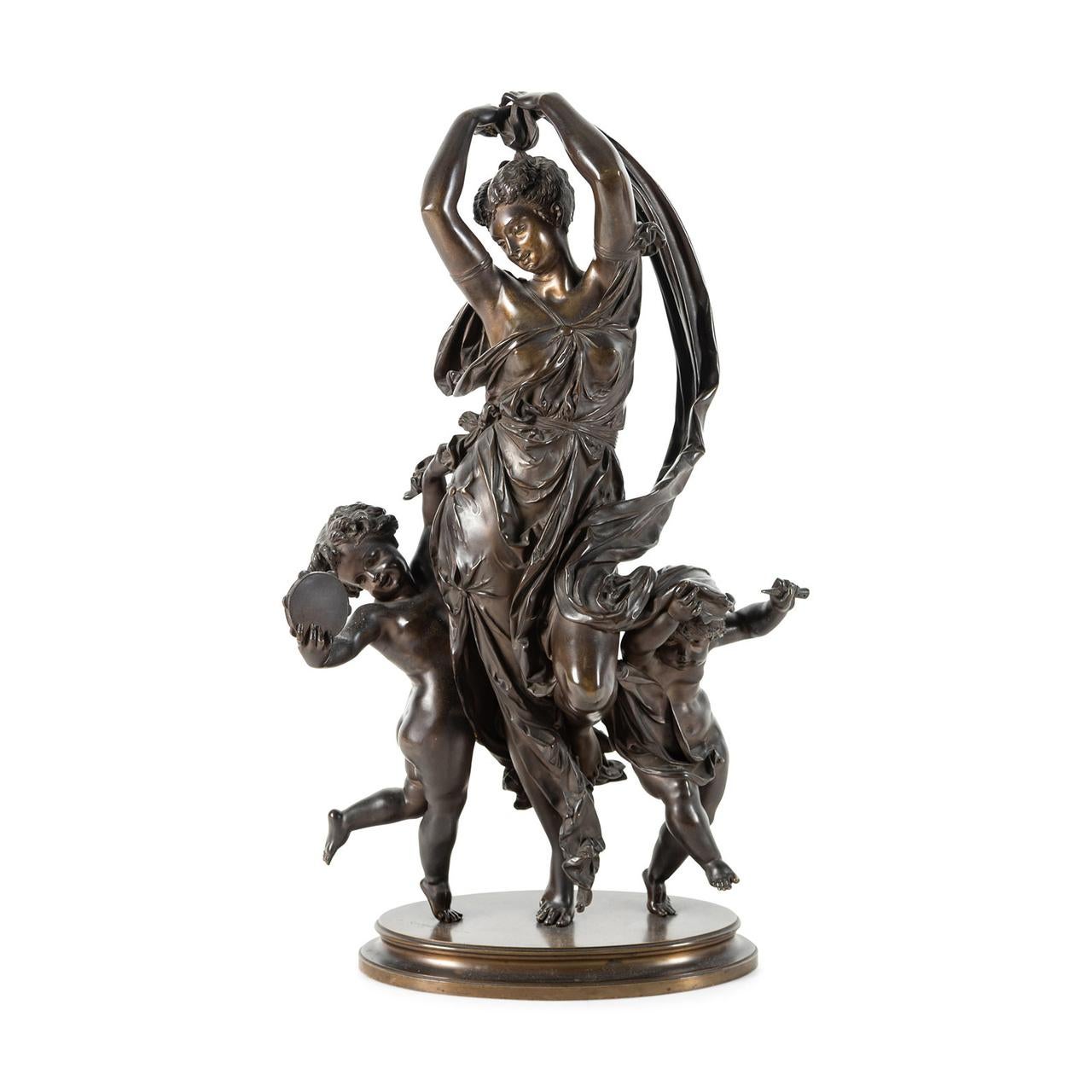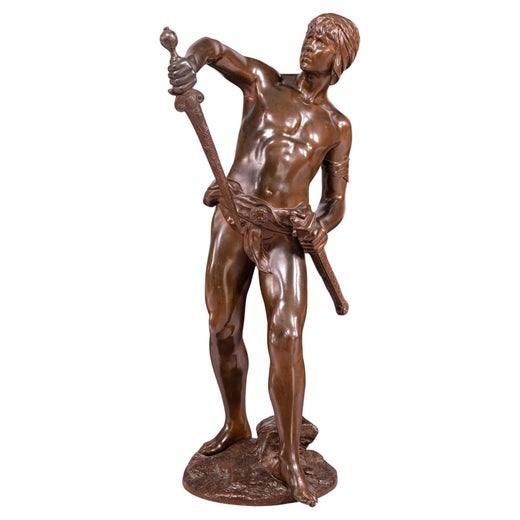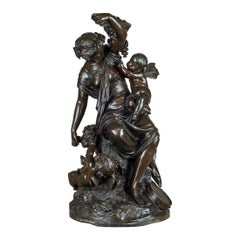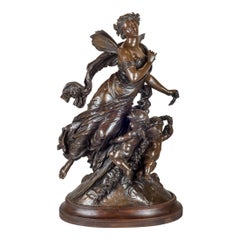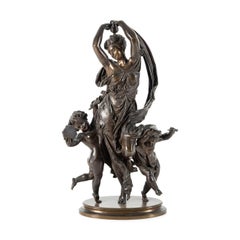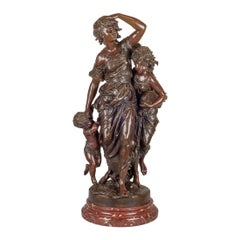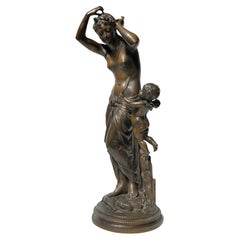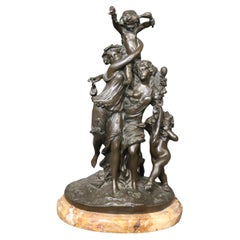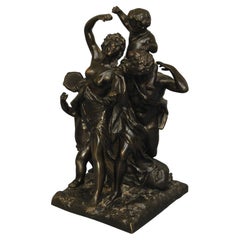Items Similar to Figural Group of Venus Flanked by Putti
Want more images or videos?
Request additional images or videos from the seller
1 of 7
Louis Auguste MoreauFigural Group of Venus Flanked by PuttiCirca 1890
Circa 1890
$8,500
£6,492.67
€7,460.81
CA$12,133.81
A$13,303.77
CHF 6,947.12
MX$160,094.15
NOK 87,557.41
SEK 82,326.49
DKK 55,718.45
About the Item
LOUIS AUGUSTE MOREAU
French, (1834-1917)
Figural Group of Venus Flanked by Putti
Patinated bronze; Signed ‘Ate Moreau’
28 in. x 11 in x 8 inches
Notes:
Having a deep brown patina of exquisite quality depicting love and devotion between Venus and her committed little admirers, cupids.
- Creator:Louis Auguste Moreau (1855 - 1919, French)
- Creation Year:Circa 1890
- Dimensions:Height: 28 in (71.12 cm)Width: 11 in (27.94 cm)Depth: 8 in (20.32 cm)
- Medium:
- Period:
- Condition:
- Gallery Location:New York, NY
- Reference Number:Seller: SB091216-021stDibs: LU128214920681
Louis Auguste Moreau
Moreau was born in Dijon in 1855, he studied with his father and also under Aimé Millet, Augustin Drumont and Jean Thomas. Moreau's style was realistic and graceful, revealing his relation to the other members of the Moreau dynasty. The similitude of names sometimes provokes confusion. Louis August Moreau was the son of Auguste Moreau and nephew to two other celebrated French sculptors Mathurin and Hyppolyte-François, he learned sculpture under their influence as well as at the école des beaux arts in Paris. He had a brother Hyppolyte who was also sculptors. Thus making a celebrated dynasty of French sculptors creating numerous models that can now be found in museums throughout the world. Bronze sculptures by Louis August Moreau are prime examples of the Art Nouveau style. He worked in France during the turn of the century and regularly exhibited his bronze sculptures. Moreau's bronze sculptures, such as Curiese, have inspired other sculptures to create in a similar style. (Haynes Fine Art)
About the Seller
5.0
Vetted Professional Seller
Every seller passes strict standards for authenticity and reliability
1stDibs seller since 2019
25 sales on 1stDibs
Typical response time: 2 hours
- ShippingRetrieving quote...Shipping from: New York, NY
- Return Policy
Authenticity Guarantee
In the unlikely event there’s an issue with an item’s authenticity, contact us within 1 year for a full refund. DetailsMoney-Back Guarantee
If your item is not as described, is damaged in transit, or does not arrive, contact us within 7 days for a full refund. Details24-Hour Cancellation
You have a 24-hour grace period in which to reconsider your purchase, with no questions asked.Vetted Professional Sellers
Our world-class sellers must adhere to strict standards for service and quality, maintaining the integrity of our listings.Price-Match Guarantee
If you find that a seller listed the same item for a lower price elsewhere, we’ll match it.Trusted Global Delivery
Our best-in-class carrier network provides specialized shipping options worldwide, including custom delivery.More From This Seller
View AllGrecian Mother and Two Children
By Louis Auguste Moreau
Located in New York, NY
LOUIS AUGUSTE MOREAU
French, (1834-1917)
Grecian Mother and Two Children
Patinated bronze; Signed “MOREAU”.
22 x 25 inches
Category
Late 19th Century Figurative Sculptures
Materials
Bronze
French Patinated Bronze Figural Group on Bronze by Moreau
By Mathurin Moreau
Located in New York, NY
MATHURIN MOREAU (French, 1822-1914)
Signed: ‘Moreau’
19th Century
31 1/2 in. x 20 in.
Category
19th Century Figurative Sculptures
Materials
Bronze
A Fine Quality Patinated Bronze Group of Maenad and Cherubs Dancing
By Auguste-Joseph Carrier
Located in New York, NY
Inscribed 'A CARRIER Scpteur'
Title: A Maenad and Two Cherubs
Artist: Auguste-Joseph Carrier (1837-1908)
Origin: French
Date: 19th century
Dimension: 27 in. x 16 in.
Category
19th Century Figurative Sculptures
Materials
Bronze
A Fine Mathurin Moreau Patinated Bronze Group
By Mathurin Moreau
Located in New York, NY
MATHURIN MOREAU (French, 1822-1912)
Signed: ‘Mat. Moreau, hors concours’
19th Century
31 1/2 in. x 15 in.
Category
19th Century Figurative Sculptures
Materials
Bronze
Mathurin Moreau (1822-1912) Figural Bronze statue of The Allegory of Spring
By Mathurin Moreau
Located in New York, NY
Allegory of Spring
Mathurin Moreau (1822-1912)
A Belle Epoque bronze statue depicting an Allegory of Spring with a seated maiden looking over to view two birds as a putto gathers a...
Category
Late 19th Century Nude Sculptures
Materials
Bronze
Mathurin Moreau Triumph of Flora Bronze
By Mathurin Moreau
Located in New York, NY
Mathurin Moreau (French, 1822-1912)
The Triumph of Flora
Female figural statue of Flora and two putti resting on a rouge marble base.
Bronze and Rouge Marble
signed 'Math. Morea...
Category
19th Century Figurative Sculptures
Materials
Bronze
You May Also Like
Venus and Cupid Bronze Sculpture After Jean Louis Gregoire (1840-1890)
By Jean Louis Grégoire
Located in New York, NY
Antique (late 19th century) bronze sculpture of Venus adoring herself in a mirror held by Cupid, after the original model by Jean Louis Gregoire (1840-1890), is finely cast with a w...
Category
Antique Late 19th Century French Neoclassical Figurative Sculptures
Materials
Bronze
After Clodion Signed Bronze Sculpture Titled "Bacchae and Cupid"
By Claude Michel Clodion
Located in Swedesboro, NJ
Dimensions- H: 17 3/4in W: 11 1/4in D: 8.5in
This Bronze Signed After Claude Michael Clodion titled "Bacchae and Cupid" is an exceptional sculpture and was made with quality in mind....
Category
Early 20th Century French Louis XV Figurative Sculptures
Materials
Marble, Bronze
Antique French Neoclassical Rococo Bronze Figural Group of Wine Bacchantes 1762
By Claude Michel Clodion
Located in Portland, OR
A fine antique bronze figural group of Bacchantes by Claude Michel (Clodion) ( 1738– 1814).
The bronze depicts a pair of bacchantes, the female followers of Bacchus the Roman god of ...
Category
18th Century Rococo Figurative Sculptures
Materials
Bronze
19th Century Bronze Group with Baccus, Maidens and Putti
Located in Lincolnshire, GB
A charming Italian bronze of Baccus with dancing maiden and putti, good patination Circa 1840.
Category
Antique Mid-19th Century Italian Figurative Sculptures
Materials
Bronze
'Bacchantes', a Fine Patinated Bronze Figural Group After Clodion, circa 1870
By Claude Michel Clodion
Located in Brighton, West Sussex
'Bacchantes', a fine patinated bronze figural group after Claude Michael Clodion, French (1738-1814).
French, circa 1870.
Signed 'Clodion' to the base and inscribed 'BACCHANTE...
Category
Antique Late 19th Century French Figurative Sculptures
Materials
Bronze
Auguste Moreau "Putto" Bronze Sculpture
By Auguste Moreau
Located in Astoria, NY
After Auguste Moreau (French, 1834-1917) "Putto" Patinated Bronze Sculpture, the seated figure upholding a vine branch and a jester's rattle, seated on a draped rocky base, apparentl...
Category
Antique Late 19th Century Neoclassical Figurative Sculptures
Materials
Bronze
